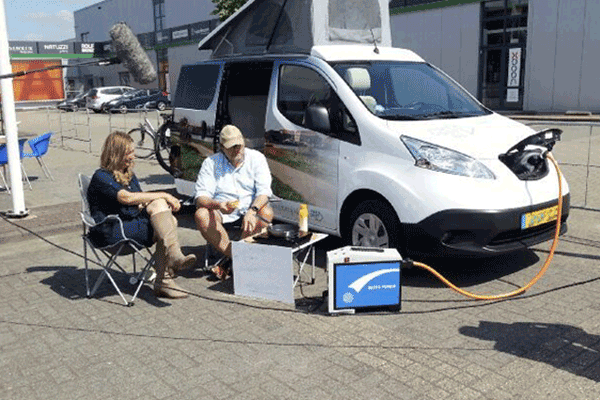I ran a search for ‘V2H’ on the forum and everything I found was at least a year old if not two.
So I figured this was as good of a place as any to start a new thread on the status of V2H.
Specifically, while we’ve seen several new EVs announced including the Ford F150-Lightening and the Hyundai Ioniq5 which will support ‘V2L’ it’s unclear to me whether either of these new EVs will also support ‘V2H’ or not and which other EVs out there either already support V2H or have plans to.
My simple understanding is as follows:
V2L: 120VAC and/or 240VAC output on an EV powered directly from the EV battery using an integrated inverter. This is not synced to grid and so can only be used to power appliances through an extension cord (or potentially modest loads of a whole house when off grid). The two EVs mentioned will be the first with integrated support for this capability. Simple (basically similar to the 120VAC outlets integrated into many hybrids, but powered off of the EV’s main battery rather than the 12V LA battery) and emerging quickest.
V2G: this is grid-interactive capability managed through the EV charger and allowing the grid to get power from the EV’s stored energy. Complicated protocol, complicated equipment, and moving very slowly (I have no interest in V2G, personally).
V2H: this is the acronym being given to the bi-directional charging capability of delivering grid-tied power from the EVs battery to offset consumption (so no export). Off-grid backup capability is another animal and may or may not be part of the bundle, but I’m specifically interested in the ability to charge an EV with excess solar production during the day (to avoid export) coupled with the ability to invert enough battery power to offset loads in the evening (to avoid import).
I’ve seen several EV chargers out there claiming to support V2H but can’t find any information on EVs existing or planned to support the capability.
V2H is more complicated than V2H (but much simpler than V2G) because it requires being synced to grid (grid-tied) and needs to communicate with an energy monitor to know how much power to output. It essentially means integrating the hybrid inverter capability of a Solark or a Schneider Conext CW+ into an EV charger (assuming the EV supports DC charging - grid-tied inverter could be integrated into the EV in the case of an AC charger).
It seems as though the latest Nissan Leaf may support V2H but only through the specific charger standard it supports.
So any insight into which EVs support V2H (or are planned to) and where things are as far as this emerging V2H charger standards and this load-offset capability being ready for Prime Time would be greatly appreciated.
So I figured this was as good of a place as any to start a new thread on the status of V2H.
Specifically, while we’ve seen several new EVs announced including the Ford F150-Lightening and the Hyundai Ioniq5 which will support ‘V2L’ it’s unclear to me whether either of these new EVs will also support ‘V2H’ or not and which other EVs out there either already support V2H or have plans to.
My simple understanding is as follows:
V2L: 120VAC and/or 240VAC output on an EV powered directly from the EV battery using an integrated inverter. This is not synced to grid and so can only be used to power appliances through an extension cord (or potentially modest loads of a whole house when off grid). The two EVs mentioned will be the first with integrated support for this capability. Simple (basically similar to the 120VAC outlets integrated into many hybrids, but powered off of the EV’s main battery rather than the 12V LA battery) and emerging quickest.
V2G: this is grid-interactive capability managed through the EV charger and allowing the grid to get power from the EV’s stored energy. Complicated protocol, complicated equipment, and moving very slowly (I have no interest in V2G, personally).
V2H: this is the acronym being given to the bi-directional charging capability of delivering grid-tied power from the EVs battery to offset consumption (so no export). Off-grid backup capability is another animal and may or may not be part of the bundle, but I’m specifically interested in the ability to charge an EV with excess solar production during the day (to avoid export) coupled with the ability to invert enough battery power to offset loads in the evening (to avoid import).
I’ve seen several EV chargers out there claiming to support V2H but can’t find any information on EVs existing or planned to support the capability.
V2H is more complicated than V2H (but much simpler than V2G) because it requires being synced to grid (grid-tied) and needs to communicate with an energy monitor to know how much power to output. It essentially means integrating the hybrid inverter capability of a Solark or a Schneider Conext CW+ into an EV charger (assuming the EV supports DC charging - grid-tied inverter could be integrated into the EV in the case of an AC charger).
It seems as though the latest Nissan Leaf may support V2H but only through the specific charger standard it supports.
So any insight into which EVs support V2H (or are planned to) and where things are as far as this emerging V2H charger standards and this load-offset capability being ready for Prime Time would be greatly appreciated.




